What is the best conversational AI? Chatbot vs conversational AI
Chatbot vs Conversational AI Chatbot: Understanding the Differences
Since the time Julie was launched, the platform has made an 8x return on investment by reducing the company’s customer service costs by a total of $1 million. Amtrak’s virtual assistant called Julie, also known as Ask Julie, has been an invaluable tool when it comes to helping travelers find all the necessary information without having to contact customer support. Chatbots and Conversational AI tools are proving to be integral solutions to increasing engagement and developing lasting relationships with their clients, prospects, and employees while reducing service costs. So, the automatic speech recogniser takes raw audio and text signals, and transcribes them into word hypotheses. These hypotheses are then transmitted to the spoken language understanding module. The goal of this module is to capture the semantics and intent of the words spoken or typed.
Conversational AI is an artificial intelligence technology that allows users to have human interactions with a synthetic consciousness to interpret their meaning and an appropriate response. It utilizes machine learning, natural language processing, and large volumes of historical and linguistic data to mimic human communication. It’s computer software powered with artificial intelligence and designed to mimic human-like conversations.
Conversational AI’s Advantage over Traditional Chatbot
These bots can handle simple inquiries, allowing live agents to focus on more complex customer issues that require a human touch. This reduces wait times and will enable agents to spend less time on repetitive questions. Rule-based chatbots follow a set of rules in order to respond to a user’s input. This means that specific questions have fixed answers and the messages will often be looped. Today’s businesses are looking to provide customers with improved experiences while decreasing service costs—and they’re quickly learning that chatbots and conversational AI can facilitate these goals. Conversational AI technology can be used to power various applications beyond just chatbots.
These NLP processes flow into a constant feedback loop with machine learning processes to continuously improve the AI algorithms. Conversational AI has principle components that allow it to process, understand, and generate response in a natural way. Often during testing we see clients expecting the bot to answer general out-of-scope questions like “Who is in the board of directors of our company XYZ? The reason they were not included is because from experience, customers tend to ask questions that helps them solve problems or get something done as compared to general “Who is” or “What is” type questions.
Benefits of Conversational AI in customer service
Conversational AI is a type of artificial intelligence that enables machines to engage in human-like dialogues, grasp context, and formulate intelligent responses. It achieves this through technologies such as Natural Language Processing (NLP), which assists computers in understanding human speech and generating relevant responses. When we talk about AI chatbots, we typically think concersational ai vs chatbots of a text-based window where we communicate with an AI. There can be a lot to wade through when first dipping your toes into the complex world of AI — especially when you want to use it to enhance your business’s customer experience. LivePerson has demystified the conversation around this brave new frontier, creating approachable AI that can be scaled to suit your needs.
Responses can be broadly categorised into two types – definitive and deflective. The primary means of interacting with a chatbot is via text, while a conversational AI offers the option of fluent communication through speech, as well. This makes the latter a far more powerful and promising tool, in comparison to the standard chatbot. Once again, it’s worth noting that while most chatbots utilize Natural Language Processing (NLP), it’s not essential, and there are different types of chatbots. Conversational AI is a much broader term, with AI Chatbots being a subset, one piece of a much larger puzzle. You’re likely familiar with AI chatbots like ChatGPT or other newer ones like Chatsonic or Bard, as they’ve gained immense popularity recently.
Best CMMS Software Features and Its Benefits
Slang and unscripted language can also generate problems with processing the input. Conversational AI starts with thinking about how your potential users might want to interact with your product and the primary questions that they may have. You can then use conversational AI tools to help route them to relevant information. In this section, we’ll walk through ways to start planning and creating a conversational AI. Keeping all these questions in mind will help you focus on what you are specifically looking for when exploring a conversational AI solution. Moreover, having a clear idea of what to expect from a “smart” chatbot will help you define clear KPIs to measure the success of the solution.
William Shatner, Star Trek’s Captain Kirk, takes on an AI chatbot – Reuters
William Shatner, Star Trek’s Captain Kirk, takes on an AI chatbot.
Posted: Thu, 24 Aug 2023 07:00:00 GMT [source]
So, while rule-based chatbots and conversational AI-based bots are both used for human-bot interaction, they are very different technologies and also provide a completely different customer experience. AI chatbots, on the other hand, use artificial intelligence and natural language understanding (NLU) algorithms to interpret the user’s input and generate https://www.metadialog.com/ a response. They can recognize the meaning of human utterances and generate new messages dynamically. This makes chatbots powered by artificial intelligence much more flexible than rule-based chatbots. Rule-based chatbots—also known as decision-tree, menu-based, script-based, button-based, or basic chatbots—are the most rudimentary type of chatbots.
To know more about our solution and how we’re working to deliver conversational AI, request a demo. Limited future potential due to static nature and inability to adapt to evolving user needs. Needs manual maintenance & reconfiguration for minor updates and revisions to the pre-defined conversational workflows. Some that stand out include ChatGPT from OpenAI, Bard from Google, and Bing Chat from Microsoft. However, some of the more advanced features and newer models may require a subscription. This frees up your human resources to concentrate on more important and high-value tasks, improving productivity and overall efficiency.
Can chatbot talk out loud?
In chatbot applications, voice chatbots are bots that communicate in an automated way using vocal input and output. You can talk to the bot out loud like you would to a person. In turn, it will respond with a voice of its own without the need for human interaction on its end.
This technology also means that an IVR doesn’t need to include a long and complicated menu. Instead, customers can just say why they’re calling and be given the appropriate response or be routed to the right agent. Unlike chatbots being unconnected and scattered across different platforms, conversational AI is powered by different sources and functions as a consistent conversational flow. That means that conversational artificial intelligence can handle fluid interactions with users without the need to produce the output by manually inserting it into the flow.
What are the types of conversational AI?
- Chatbots.
- Voice and mobile assistants.
- Interactive voice assistants (IVA)
- Virtual assistants.

